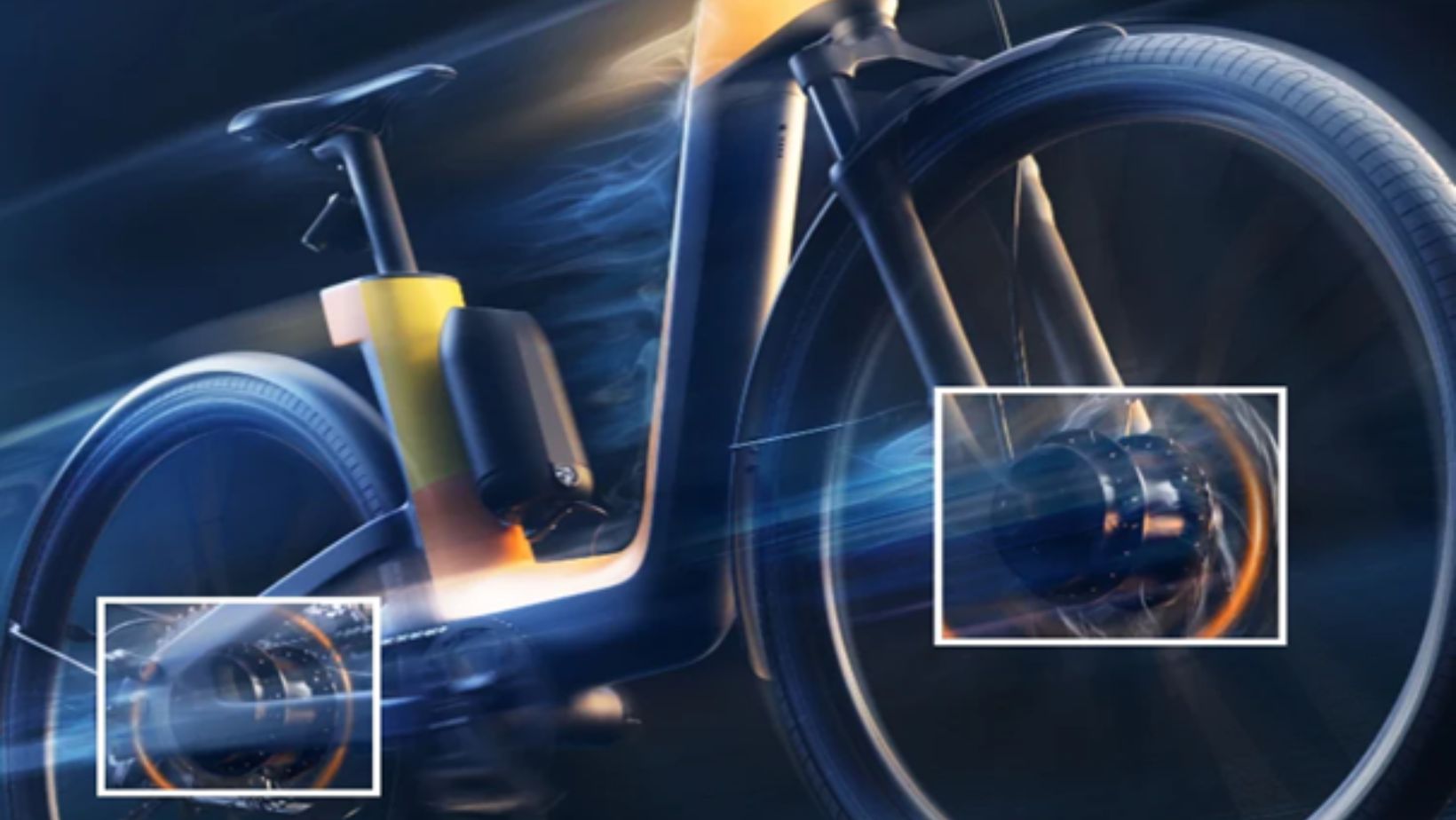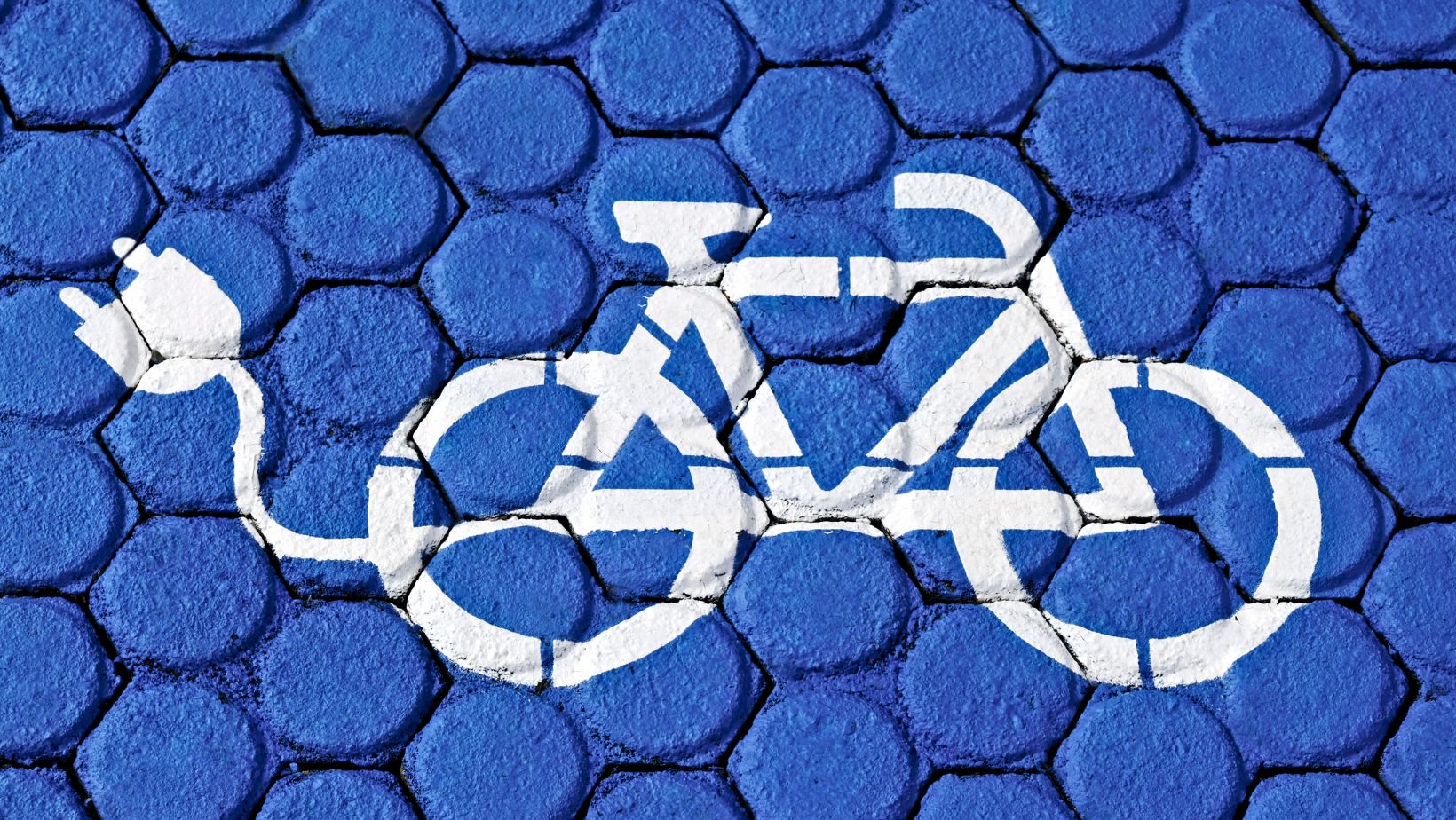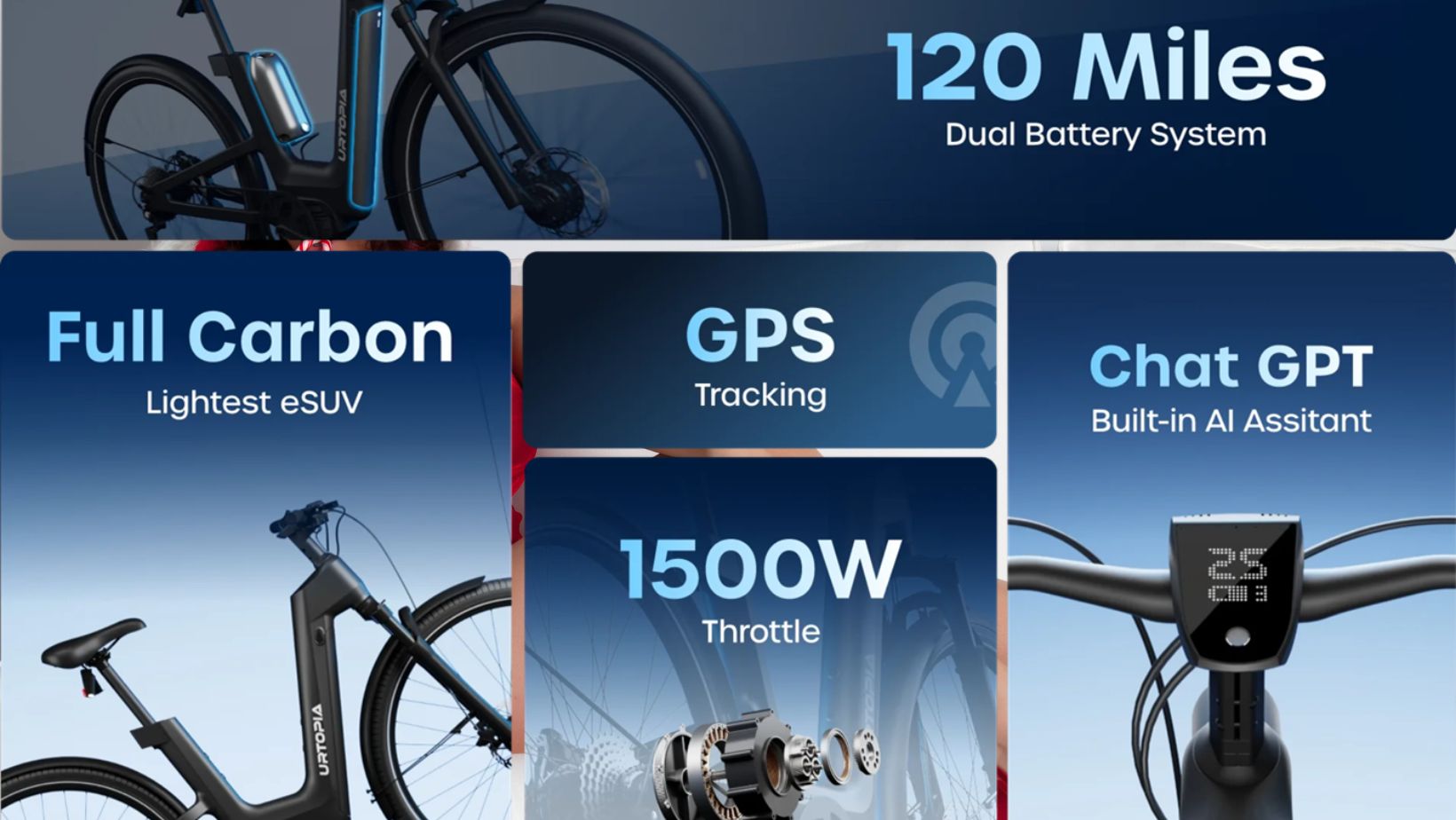 Electric bikes have transformed everyday cycling by combining traditional pedaling with motor assistance. The motor and drive system you choose will affect how your bike performs – from climbing hills to riding longer distances with less effort. Whether you’re commuting to work or riding for fun, these key parts determine your bike’s capabilities and range. This guide covers the different motors and drive systems, what they do well, and how to pick the right one for your needs.
Electric bikes have transformed everyday cycling by combining traditional pedaling with motor assistance. The motor and drive system you choose will affect how your bike performs – from climbing hills to riding longer distances with less effort. Whether you’re commuting to work or riding for fun, these key parts determine your bike’s capabilities and range. This guide covers the different motors and drive systems, what they do well, and how to pick the right one for your needs.
Types of Electric Bike Motors
Electric bike motors come in three main designs, each with distinct advantages for different riding styles and needs. The placement of these motors significantly influences how your e-bike handles and performs in various situations.
Front Hub Motors
Front hub motors sit in the center of your front wheel. These motors are simpler to install and cost less than other options. They work well for casual riders and flat city streets. The motor pulls you forward from the front wheel, which feels different from regular biking but is easy to get used to. Since these motors leave the bike’s gears untouched, you can still use your normal gear system when pedaling without power.
Rear Hub Motors
Rear hub motors provide better traction because they power the same wheel that receives force from your pedaling. They handle wet conditions better and give you more control when riding uphill. Many delivery riders and urban commuters prefer rear hub motors because they offer reliable power without complex maintenance. The added weight in the back also feels more natural since it matches the weight distribution of regular bikes.
Mid-Drive Motors
Mid-drive motors connect directly to your bike’s pedal system at the center of the frame. This placement keeps the weight low and centered, making the bike feel balanced and stable. These motors can use your bike’s gears, which helps them work efficiently on different terrain. They excel at steep hills and long-distance riding, making them popular for mountain biking and touring.
| Feature | Hub Motors | Mid-Drive Motors |
| Performance | Steady power, may struggle on steep hills | Better adaptation to terrain through gear use |
| Maintenance | Low maintenance, simple repairs | Regular maintenance needed, more complex repairs |
| Cost | Lower initial and repair costs | Higher purchase and maintenance costs |
| Terrain Suitability | Best for flat to moderate hills | Excellent for varied terrain including steep hills |
| Weight Distribution | Weight concentrated in one wheel | Centered weight for better balance |
Your riding habits and local terrain will guide your choice between these motor types. Each design offers a different mix of performance, cost, and ease of maintenance to match your specific needs.
Key Motor Specifications for E-Bikes
Motor specifications serve as reliable indicators of e-bike performance. These key numbers reveal what to expect from each motor model in daily use.
Power Rating (Watts)
The power rating tells you how much continuous power the motor can deliver:
● 250W motors work well for city riding and gentle slopes
● 500W motors provide more speed and better hill-climbing ability
● 750W motors offer strong performance for steep hills and heavy loads
Note: Many regions limit street-legal e-bikes to 250W or 500W. Higher wattage doesn’t always mean better performance – factors like motor efficiency and bike weight also matter.
Torque Output (Nm)
The motor’s moving force is measured by torque. It usually falls between 40 and 80 Newton meters (Nm). This standard is very important when things get tough, like when you have to start from scratch or go up steep hills.

A motor with more torque (60+ Nm) is great for getting through rough terrain and carrying big loads. Motors with 40–50 Nm, on the other hand, help with regular commuting and casual rides on flat terrain in a smooth, comfortable way. For riders who often go up hills or plan to carry cargo, the torque rating is especially important because it tells you how much power the motor can provide in these cases.
Motor Noise Level
Motor noise is different for each type and amount of quality. Hub motors don’t make a lot of noise, so they’re good for riding in quiet areas or early in the morning. Because they work with the bike’s drive chain, mid-drive motors make a little more noise, especially when working hard on hills or when speeding up quickly. High-end motors use modern engineering and materials to keep noise levels low. The noise level is especially important for riders in cities who often ride on quiet streets or for anyone who likes riding quietly. Motor noise might not be as scary for riders in rural areas because background noises often cover up the motor’s operation.
Drive Systems in Electric Bicycles
There are different ways to control the motor speed on electric bikes, and each one is best for a certain riding style and personal taste. These devices control how you use the motor on your e-bike while you’re riding.
Pedal-Assist Systems (PAS)
When you pedal, pedal-assist methods turn on the motor. Sensors in these systems pick up on how hard you’re spinning and adjust the motor’s power to match. Simple sensors pick up when the pedals are moved, while more complex torque sensors react to how hard you push the pedals. Most e-bikes have more than one amount of assistance:
● Low assist (Eco mode) adds 30-50% to your pedaling power, extending battery life and providing light support.
● Medium assist boosts your effort by 100-150%, suitable for daily commuting.
● High assist modes can add 200-300% power, helpful for hills or headwinds.
Many modern e-bikes let riders fine-tune these assist levels through smartphone apps or bike computers.
Throttle-Only Systems
Like on a motorbike, a throttle lets you use the motor without pedaling. A thumb button or a twist grip on the handlebar lets you change the speed. Throttles are helpful when starting from a stop, getting through busy streets, or riding when you’re tired. Some bikes have both throttle and pedal-assist choices, but using the throttle on public roads is often limited or not allowed in many places.
Pedelec vs. S-Pedelec Classifications
Pedelecs are regular e-bikes that have motors that help them go up to 20 mph (32 km/h) in North America or 25 km/h in Europe. Bikes like these don’t need a license and can ride on bike routes and lanes.
S-Pedelecs, also called Speed Pedelecs, can help you go up to 28 mph (45 km/h), but they have to follow tighter rules. Most places classify them differently from regular e-bikes, which means that you usually have to:
● Registration and insurance
● A driver’s license or special permit
● Helmet use
● Restricted access to bike paths
● Age restrictions for riders
The choice between these systems affects both your riding experience and where you can legally ride your e-bike.
E-Bike Battery and Motor Compatibility
Each e-bike’s motor and battery must work in harmony to deliver optimal performance. A properly integrated system ensures reliable power delivery and efficient operation.
Battery Technologies in Modern E-Bikes
Modern e-bikes primarily use lithium-ion batteries due to their high energy density and declining cost. While older e-bikes used lead-acid or nickel-metal hydride batteries, these have largely disappeared from the market. Premium e-bikes often feature advanced lithium chemistries like lithium iron phosphate (LiFePO4), which offer better safety and longer lifespan despite lower energy density.
Battery Capacity and Power Delivery
Battery specifications combine voltage and amp-hours (Ah) to determine total capacity in watt-hours (Wh). A typical 36V battery with 10Ah capacity provides 360Wh of energy. Higher voltage systems (48V, 52V) deliver more power for stronger acceleration and hill climbing, while higher amp-hour ratings extend the range.
The actual range depends heavily on:
● Motor power usage
● Terrain (hills consume more energy)
● Rider weight and cargo
● Weather conditions
● Assist level selected
Charging Systems and Battery Longevity
Modern e-bike batteries typically last 500-1000 full charge cycles while maintaining 80% of their original capacity. Smart charging systems protect batteries by:
● Preventing overcharging
● Balancing individual cells
● Monitoring temperature
● Limiting charging speed when needed

Charging times range from 3-6 hours for standard chargers to 1-2 hours for fast chargers. However, faster charging can reduce battery lifespan. Most manufacturers recommend regular partial charges rather than fully depleting the battery.
The relationship between battery performance and motor efficiency significantly influences your e-bike’s overall capabilities and riding experience.
E-Bike Performance and Riding Efficiency
The placement of components and their integration affect how an e-bike feels and performs in real-world conditions.
Balance and Handling Characteristics
Motor placement significantly affects an e-bike’s center of gravity. Mid-drive motors keep weight centralized and low, preserving the bike’s natural handling. Front hub motors can lighten the rear wheel, affecting traction on steep climbs. Rear hub motors add weight to the back, which can improve stability at higher speeds but may require adjustment to riding style for optimal control.
Energy Use and Range Optimization
Different drive systems convert battery power to forward motion with varying efficiency. Mid-drive motors benefit from the bike’s gears, allowing the motor to operate in its optimal range more often. Hub motors operate most efficiently at moderate speeds on flat terrain, with efficiency dropping during hill climbs or high-speed riding.
Several factors maximize range:
● Maintaining proper tire pressure reduces rolling resistance
● Using appropriate assist levels for conditions saves power
● Smooth acceleration and steady speeds improve efficiency
● Regular maintenance ensures optimal system performance
Matching E-Bikes to Riding Conditions
Different environments demand specific e-bike characteristics:
● Urban Areas: Quick acceleration and maneuverability matter most. Lighter systems with moderate power suit stop-and-go traffic.
● Hilly Regions: Higher torque and efficient power delivery become crucial. Mid-drive systems typically excel in these conditions.
● Rural Roads: Extended range and reliability take priority. Systems with larger batteries and proven durability work best.
● Mixed Terrain: Versatile systems that balance power and efficiency help handle varied conditions. Adjustable assist levels provide flexibility for different situations.
Proper matching of the e-bike system to your typical riding conditions ensures optimal performance and rider satisfaction.
Pick the Right Motor for Your E-Bike!
Power ratings, torque, motor type, and battery compatibility work together to create your ideal e-bike experience. Hub motors offer simple maintenance and reliable power, while mid-drive systems excel at hill climbing and efficiency. By matching these features to your riding needs – whether you’re commuting in the city, exploring trails, or making deliveries – you can find an e-bike system that gives you the right mix of power, range, and handling for your rides.



